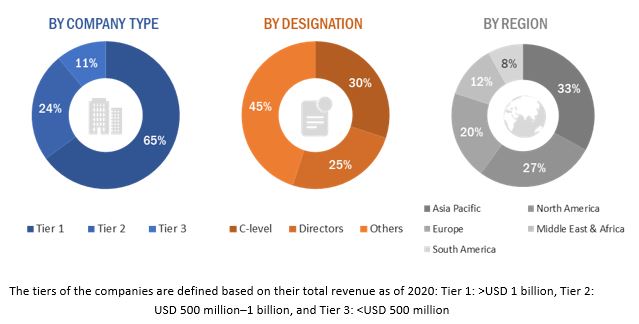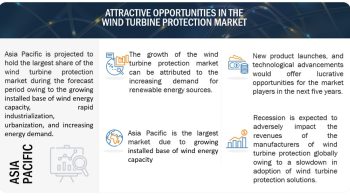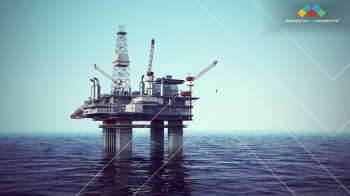The thermoplastic pipe market is expected to grow from an estimated USD 2.7 billion in 2021 to USD 3.3 billion by 2026, at a CAGR of 4.5% during the forecast period. The increasing application of thermoplastic composite pipes and reinforced thermoplastic pipes in offshore and onshore production activities is the main driver for the thermoplastic pipe market. The growing deep and ultra-deepwater oil & gas exploration and production activities are expected to provide lucrative opportunities for the thermoplastic pipe market during the forecast period.
Download PDF Brochure – https://www.marketsandmarkets.com/pdfdownloadNew.asp?id=94371234
Driver: Increasing application of thermoplastic composite pipes and reinforced thermoplastic pipes in offshore and onshore production activities
The oil & gas industry uses steel as a key material in manufacturing a variety of tubes and pipes. In the onshore industry, steel continues to be used dominantly in products such as coiled tubing and flow lines. However, thermoplastic composites are primarily used for offshore applications, such as chemical injection pipes and risers. Its properties, such as wear and corrosion resistance, better stiffness, and strength with respect to changes in temperature and deformation due to stress, make it highly effective for underwater applications. Offshore drilling and production activities are expected to increase in the next five years at a greater pace than onshore activities, given the increasing importance of deep and ultra-deepwater oil & gas production and exploration activities, as demand for fossil fuels has intensified. Therefore, thermoplastic composites’ application in offshore products, such as flowlines, umbilical, and risers, is likely to drive the thermoplastic pipe market in the oil & gas industry.
On the other hand, reinforced thermoplastic pipes (RTP) are being used in the oil & gas industry, where it is used to replace medium-pressure steel pipes. Various significant companies, which are certified for international standards, design pipes with a pressure capacity of up to 450 bar or 6527 psi and can be used for onshore applications. Moreover, these wholly plastic pipes use thermoset-based composite parts that are ideal for onshore applications.

Restraints: High cost of using high-grade thermoplastic composite pipes
Thermoplastic pipes made from engineering thermoplastic grades such as polyethylene (PE) and polyvinyl chloride (PVC) have been used extensively due to their cost-effectiveness and excellent chemical resistance properties. Higher grades of thermoplastics, such as polyether ether ketone (PEEK), have limited applications in seals and wirelines as they are expensive. These pipes provide good abrasion resistance, low flammability, and reduced emission of smoke and toxic gases, but they also have high raw material and fabrication costs. Compared with steel, composite pipes made of PEEK or polyphenylene sulfide (PPS) cost 20–100 times more, making its application impossible for products such as pipes, thus becoming the most common obstacle for the thermoplastic pipe market.
Opportunities: Growing deep- and ultra-deepwater oil & gas exploration and production activities
As the oil & gas reserves in shallow waters are running dry, producers are turning to deep- and ultra-deepwater off the coasts of Brazil, Norway, Angola, and the US. For instance, in May 2019, Strohm collaborated with SÍMEROS TECHNOLOGIES, an engineering company, to deliver Thermoplastic Composite Pipe (TCP) risers in the deepwater region of Brazil. Bringing the fluids through 3,000 m of water to the surface poses various challenges for well operators. The temperature and pressure ratings are high in deep and ultra-deepwater and increased CO2 and H2S content scour and weaken steel. Also, in deepwaters, increased pressure and currents drag the pipes through the water. To overcome these problems, companies produce flexible pipes for the oil & gas industry by winding layers of thermoplastic composite reinforced with glass or carbon fibers around a polymer liner. Moreover, thermoplastic composite pipes are much lighter than flexible steel pipes, so operators can use simpler and less expensive equipment to install them. Additionally, the ease of handling and the potential use of “no-dig” technology for installing the flexible pipes, which can be delivered to the site in long coils, help reduce jointing and traffic disruption. Hence, the benefits of using flexible composite pipes in deep- and ultra-deepwater applications are expected to pose more opportunities for the thermoplastic pipe market.
Request Sample Pages – https://www.marketsandmarkets.com/requestsampleNew.asp?id=94371234
Challenges: Difficulties in large-scale manufacturing of thermoplastic composite pipes
Thermoplastic composite pipe fabricators for the oil & gas industry usually have to procure raw materials (polymer) directly from the manufacturers because the fabricators have to work in sync with the operational requirements of oil companies and the quality of material provided by suppliers. Thermoplastic composite pipes are customized products that require modifications, depending on end-use conditions, such as pressure, temperature, and corrosion. Subsequently, the modifications are usually in polymer composition or processing conditions, which can be carried out only if there is close coordination between polymer manufacturers and the pipe fabricator. This constraint in standardization makes large-scale manufacturing of composite pipes a difficult prospect, contributing to the overall high cost of thermoplastic pipes.

